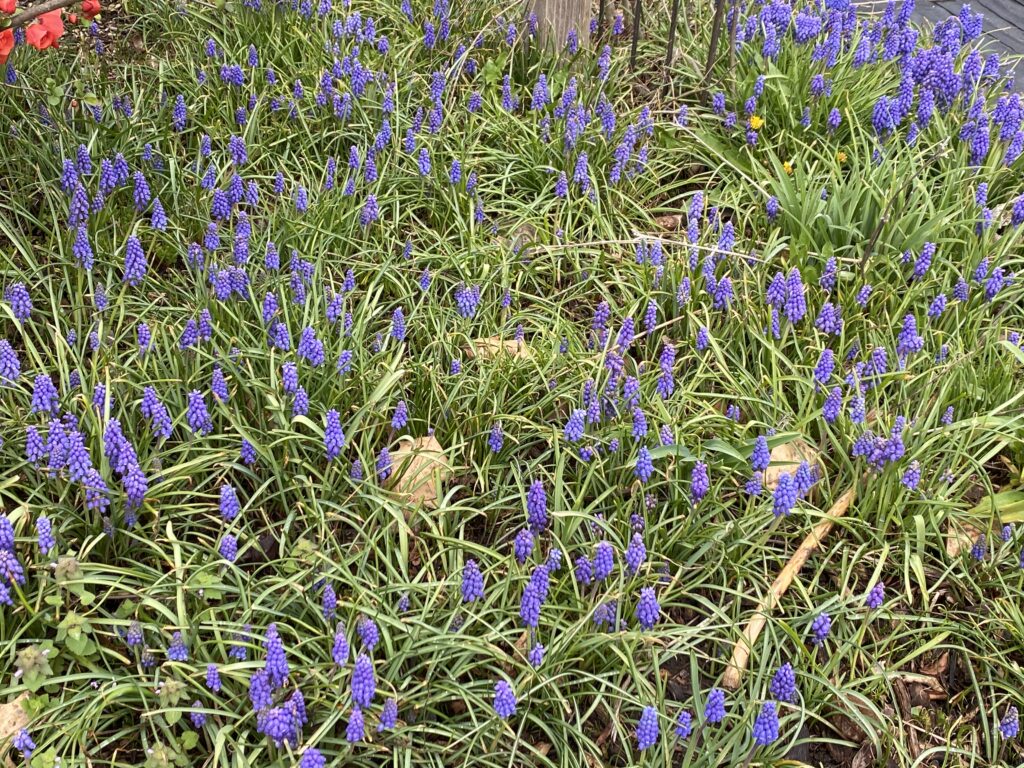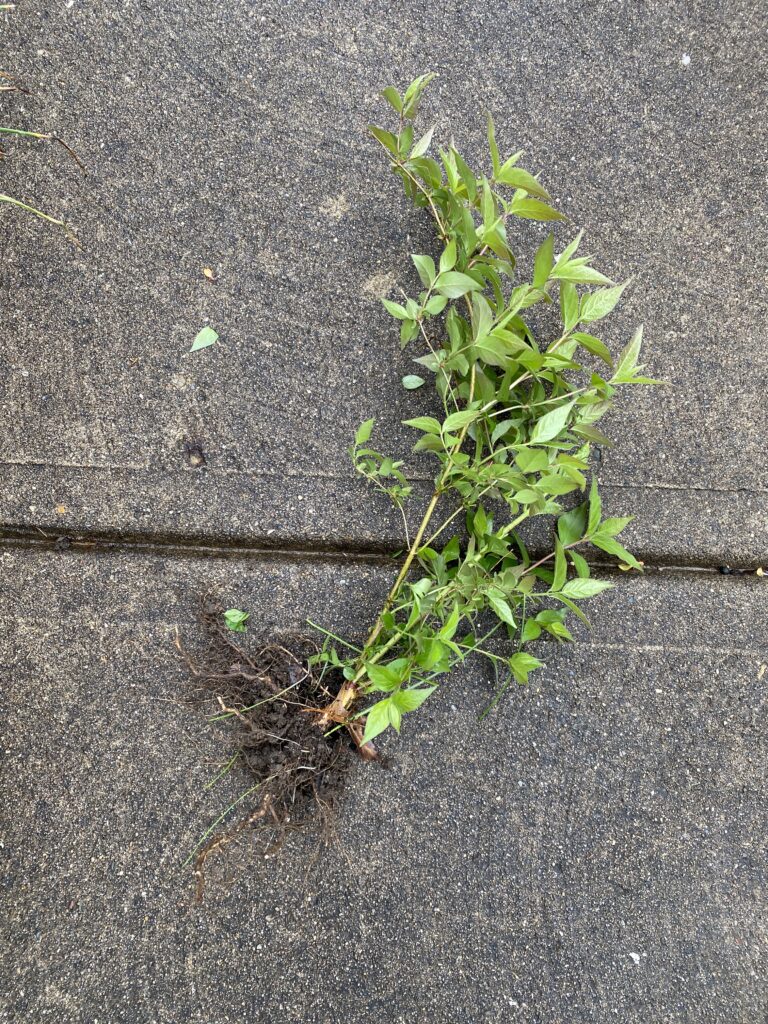
That grape hyacinth… it’s a spreader. I have proof in my own garden.
Is that bad? Not for me, it’s not. And every Easter when my sister sees it, she asks me what it is, says she likes it, and I make a mental note to get her some.
Which I will dig out of my own garden.
It’s a spreader, after all.
In fact, I think I’ve dug it up in previous years and planted some in her small condo garden. I’ll ask her to check and see.
Anyway, this post isn’t really about too much, other than I wanted to say…
Every garden is unique, but gardening is universal.
Please quote me on that. And please notice that I updated the quote on my website. It now says, “We should never take our gardens too seriously.” – Clare Leighton
Please use that quote as you wish, as well, but credit the person who wrote it back a long time ago. Clare Leighton.
Anyway, most of you will read this post on Monday morning when it pops up in your email. I would like to give you some useful information!
How about “How to Prune Invasive Asian Honeysuckle?” In three pictures.
Here goes.
First, identify it.

In the spring, it’s easy to identify invasive Asian honeysuckle because it usually leafs out before other shrubs. And in the fall, it holds its green leaves longer than most other trees and shrubs.
Having identified it, the best way to “prune” it—yes, I am using that term loosely— is to pull it out by its roots after a good rain.

Then throw it on the nearby walkway. Feel free to hurl it down violently. “Take that!”
Then complete your pruning it by tossing it into a nearby trash bin.

To be sure it is really gone, do that on “trash day.” Then imagine what will happen to that plant when it ends up at the incinerator where it will be burned.
So satisfying!
Now, because that is a terrible image to end a blog post about gardening with, I’ll end with this picture.

That’s Tulipa cluisiana ‘Lady Jane” blooming a few days ago. Lovely tulip, and unlike a lot of the hybrid tulips, this one keeps multiplying in my garden. A lovely thing!
And one more thing… another attempt at Seed Packet Poetry.

All the phrases were taken from seed packets for the tomato varieties featured in a book from 1926 that I decided to grow in my garden this year.
I hope this has been a helpful post… have a lovely week in your garden!


Leave a Reply